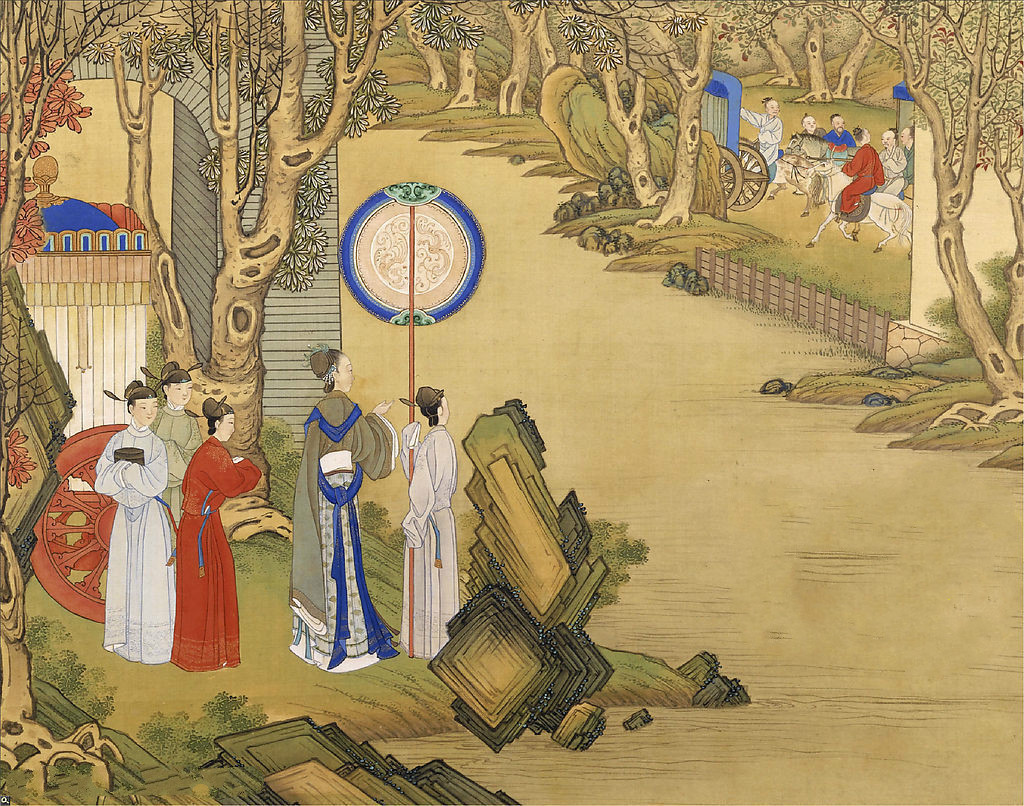Chinese fans serve as medium for painting, calligraphy styles

In ancient times, some types of fan were used to decorate the honor guard of the royal family.
Chinese fans have a history of more than 3,000 years and were believed to have been created around the Shang Dynasty. The first types of fans were not meant for cooling however. Known as shanhan, these fans were tied to a horse-drawn carriage to shut out the strong sunshine and shield passengers from the rainfall. The shanhan was a bit like today’s umbrella. Later it became a long-handled fan made of thin yet tough silk or birds’ feathers. This type was called zhangshan, and was mainly used by the emperor’s honor guard for decoration.
In fact, the fan was not used to cool people until the Zhou Dynasty, more than 2,000 years ago. At that time, the fan was usually made of feathers and called a “feather fan,” which was only popular among the noble classes. The fan became more popular during the Han Dynasty when the simple bamboo fan and the cattail-leaf fan were invented. These fans were most popular among ordinary people during the Song Dynasty.
Around the same period, a silk fan in the shape of the moon, called a “round fan,” became the favorite of young ladies, especially those in the imperial palace. Later, this moon-shaped fan took on many other shapes, some being a flat oval, or sometimes they were made in the shape of Chinese plum flower or sunflower. Usually, ribs of the fan were made of animal bones, wood or bamboo, while the handle was engraved with beautiful designs and decorated with jade pendants. Beautiful scenes of mountains and waters or flowers were also embroidered on moon-shaped fans. Cherished by young ladies, the round fan was popular in China for nearly 1,000 years. The popularity of the moon-shaped fan even enhanced the development of painting itself. From the Song Dynasty on, fan painting became an independent art form. The typical composition used in fan painting could be seen in many landscape paintings and figure paintings at the time. These fans, when decorated with paintings and calligraphy, are known as “scholars’ fans.”
During the late Qing Dynasty and the Republican period, a fan was like a person’s name tag, and the style of fan painting, calligraphy and ribs of the fan all reflected on the person’s status. Some people even carried fans with them every day. Scholars often considered fans to be the best possible present for relatives and friends.
Actually, painted fans integrate practical functions with art. These works played a supporting role in the development of traditional Chinese painting and calligraphy. Even today, since the beginning of the 1990s, more and more collectors have noticed signs of a revival in the Chinese art market and turned their eyes toward fan paintings, which are considered to be an emerging field with the possibility of expansion.
Fans can now even be seen at art auction houses. Beijing and Shanghai auction houses have introduced events specifically catering to fan paintings, which have resulted in high bids in recent years.
Some experts have indicated that fan paintings still haven’t reached their market potential. Painted fans that were created before the Ming Dynasty are rare, so they are particularly precious. Fans from the Ming and Qing dynasties are rarer still. The majority of fans on the current market are from the Republican era, and these are expected to appreciate in value. But of course, time is only one standard when measuring the value of a fan. Every detail of craft technology that was used in making the fan should be considered as well. The fame of the painter, the quality of the fan’s ribs and craftsmanship are also key contributors to its value.
